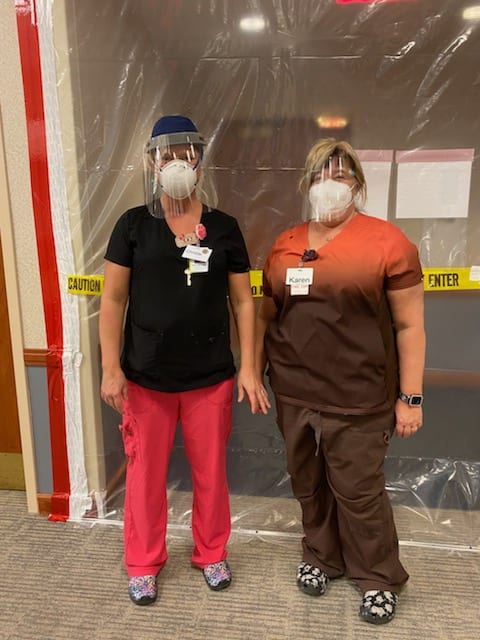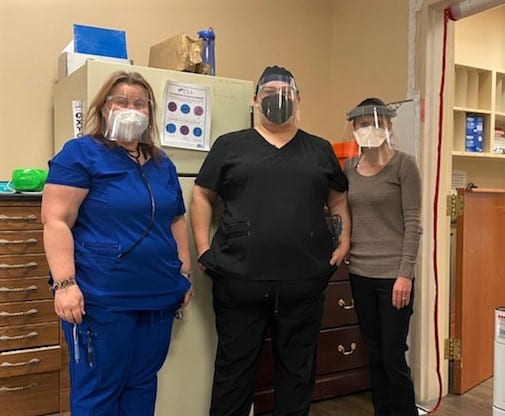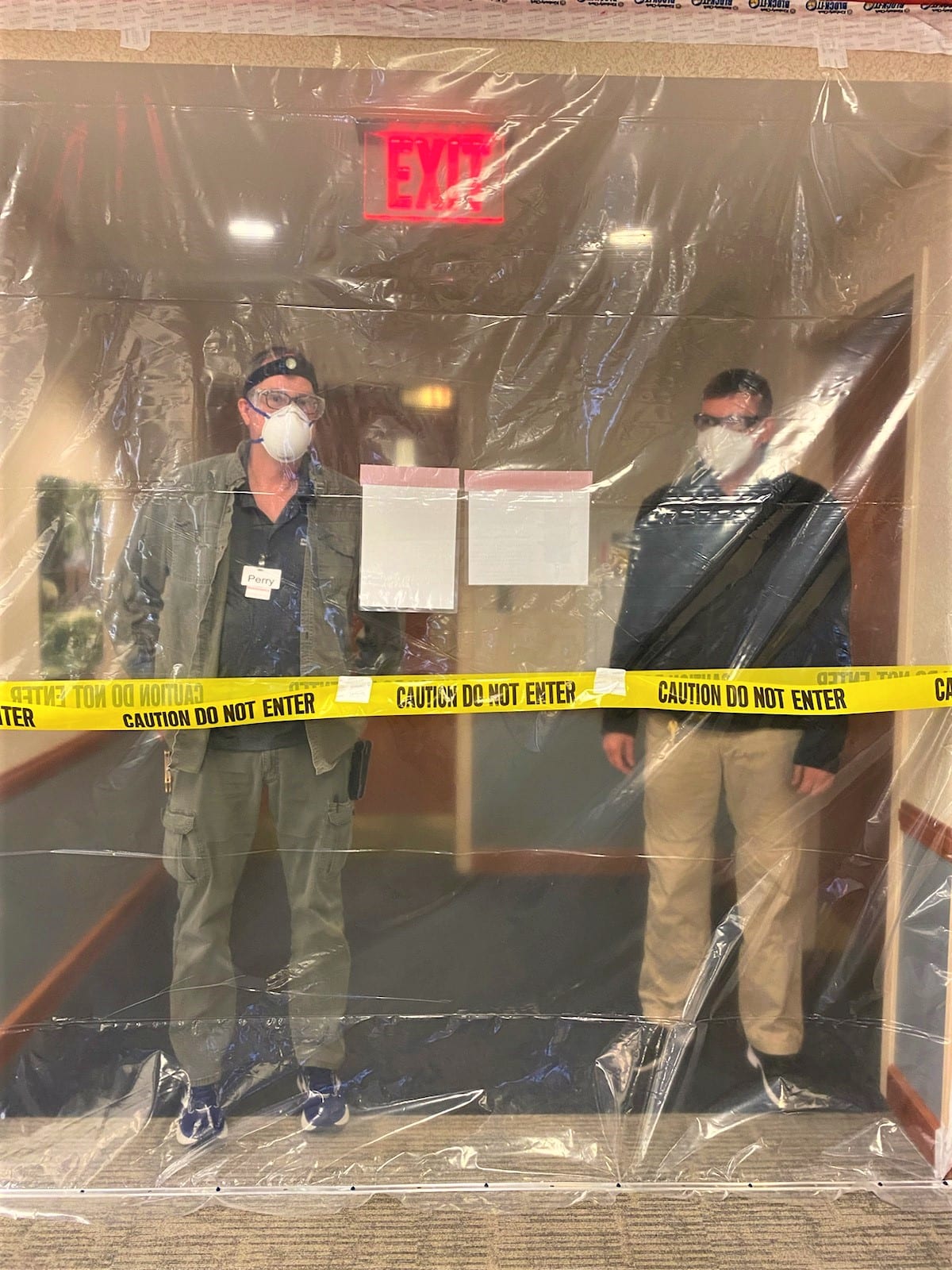The Bubble
If you are a healthcare worker, these past 12 months have been a testament to your strength.
At Providence Health Care we considered ourselves very lucky for a long time. In the early months of the pandemic, we watched many neighboring facilities be overwhelmed with outbreaks of COVID-19. Whereas at PHC, we did not see much of a large-scale outbreak until January of 2021, nearly 11 months into the mess of COVID. As we move into our sixth week of this larger scale outbreak period, things are starting to look more positive as we just completed the deconstruction of our Bubble.
What is the Bubble?
This COVID unit within our walls is what we called “The Bubble.” The Bubble consisted of massive amounts of barrier plastic, tape, zippers, blocked vents, altered ventilation systems, and a completely separate entrance and exit. To make this Bubble as functional and separate as possible, we needed more than these supplies, we also needed a COVID team.
When the Bubble was first activated, it seemed like a task we were prepared for. We had our designated COVID team, we had all the technical supplies in place, and we had played out every possible direction we felt this outbreak could turn. But in typical COVID fashion, the virus spread quickly and regardless of our strongest efforts to plan ahead and infection control efforts, we could only contain it to a certain point. Once this point was hit, we were ready to move on to our backup plan. This meant taking a day and every team member available to move the Bubble to a larger area and overall recreating our Bubble in a different location to allow more private rooms.
Once more rooms and more patients were added, it was time to increase the team involved in the Bubble. This team expansion was comprised of both volunteer team members and team members that had already tested positive for the virus to reduce spread. From here we gathered nurses, restorative aides, CNAs, housekeepers, maintenance men, respiratory therapists, and social workers. They were ready to begin providing COVID care in what was essentially a whole new facility within our existing walls. And if you work in the already short-staffed healthcare industry, you know that this was not an easy task.
The Harsh Reality
While I was not personally one of the team members inside the Bubble, nor have I personally had COVID, I have spoken to many individuals that were on the inside, and I have inquired in detail about their experiences. It was at this point in the writing process that I truly realized the magnitude of what had happened just on the other side of the walls of plastic. The accounts they relayed to me were full of struggle, emotions, and helplessness.
Each person in the Bubble checked in daily at a back entrance to our building, and completed their temperature and COVID screening process. Each COVID patient that came or went for any reason entered through this separate entrance/exit as well. Following their screening the team members got set for their shift. This meant the donning and doffing of PPE prior to the entry and exit of each room, frequent sanitizing and hand hygiene, increased attention to infection control, and caring for patients whose needs ranged from asymptomatic to end of life care.
The True Burden of COVID
According to the Indiana State Department of Health, 20% of COVID patients in nursing facilities passed. Thankfully, PHC was much under that percent. Although that does not ease the loses that we did endure. While most of our residents were asymptomatic or had mild symptoms, we did encounter our fair share of symptomatic patients that struggled to fight COVID and those who lost their battle. This is where the burden and heartache has come for our Bubble team members.
Many described sitting with Sisters as they recited the Lord’s Prayer while struggling to breathe, sobbing on their drive home, or the daily struggle of calming dementia patients that did not understand that they were affected. Another team member described the pain that she felt as she walked past our community chapel that was once full of people praying and watching mass, as it was filled with the belongings of residents that lost their battle with COVID.
One team member described working the Bubble as numbness and survival mode. Numb because just when she felt she had nothing left to give, she had to continue. She continued on because there were still so many patients left to take care of. Even when all reserves were exhausted, the survival mode took over. She said in survival mode you bury your own feelings, become as stoic as possible, and walk in to the next room with compassion and calmness, because at that moment, you are the only hope those patients have, and they are counting on you.
These are the raw and unfiltered emotions of team members that were, and still are, exhausted in every emotional and physical sense of the word.
The Lasting Effects of COVID
Even in a perfect world, there was no way to prepare healthcare facilities for the effects and damages of COVID. There are team members working with makeshift work areas, carrying the burden of caring for those that are COVID positive, the worry of contracting the virus and taking it home to their own family, and, I think worst of all, staring at the empty rooms and possessions left behind while still providing the highest level of care to their remaining patients.
The fact is that no team member, especially those that worked the Bubble, and other COVID units everywhere, will ever be the same. COVID has taken more than just a physical toll on healthcare. It has emotionally changed us all. We may be exhausted, emotionally drained, and on our knees praying for God to continue to watch over us, but at the end of the day, if there is any team ready to continue the fight to keep our family, our PHC residents safe, we are that team and our fight and prayers will continue well past the time this pandemic is over.




Recent Comments